I had just left Wavefront. This was early 2002.
I didn't have a plan. Didn't have a product. Hadn't met Kymberlee yet. No introNetworks on the horizon. Not even a whiteboard sketch of what was next.
I was wandering, really. But when your brain runs on systems and visual metaphors, it doesn't exactly sit still. Even when you want it to.
So when I ended up at a wildlife film festival here in Santa Barbara, I wasn't expecting it to become a scene I'd still be thinking about more than two decades later.
That's where I ran into my good friend Mike deGruy, whom I'd met a few years earlier at an organization I co-founded called SCAMP, The South Coast Alliance of Media Professionals.
Seems prescient that now I'm co-founder of another Alliance: Coastal Intelligence, The South Coast AI Collective.
The Brightest Light
Mike was a gem. Cinematographer. Ocean explorer. Wild man with a camera. He'd worked with all the big names, including James Cameron, but he was just Mike to me. Curious. Fast-talking. Brilliant.
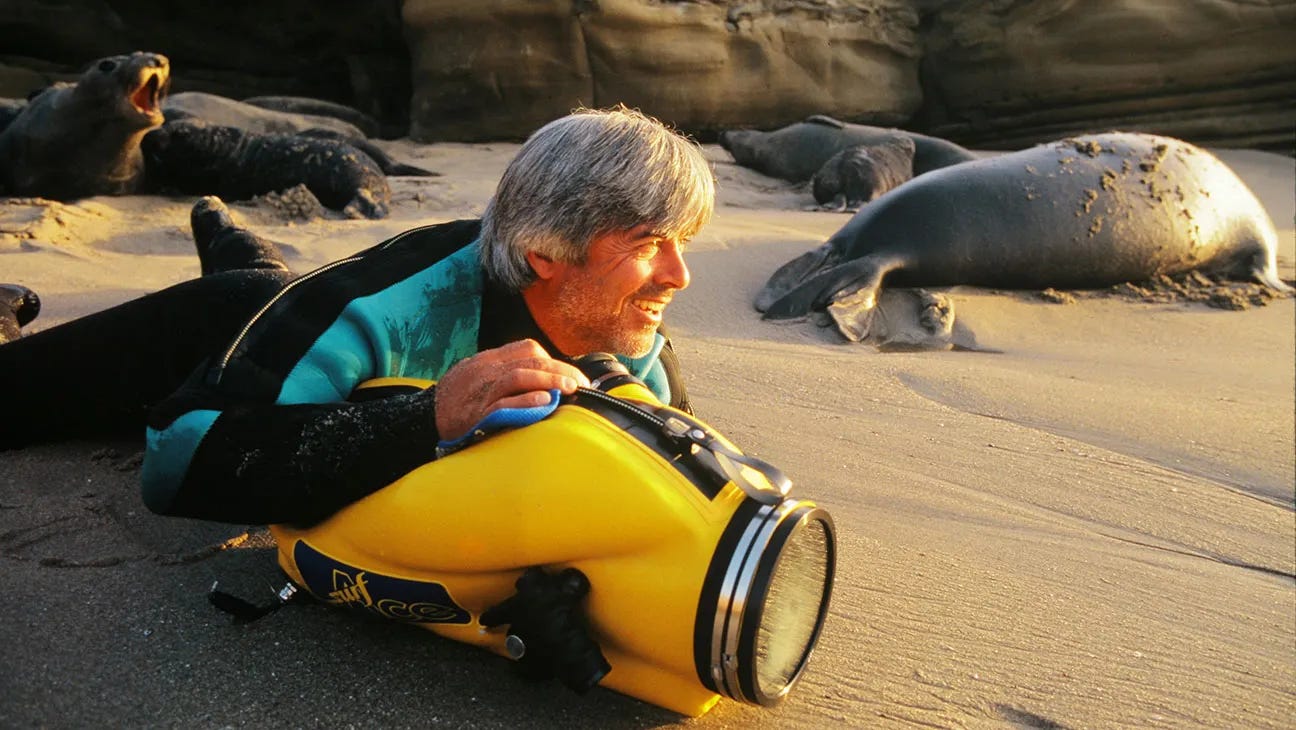
Mike was always the brightest light in a room. Nothing stopped him, and his endless optimism and love of life probably became a big part of my energy in tackling what came next.
We'd talk for hours as he explained, from his point of view, what was wrong in his industry. And excitedly, I'd offer ideas for solutions, which we'd riff on together.
Mike didn't see challenges. They were all opportunities.
We all have a Mike in our lives, or we should. Too bad he passed away so soon, but it was doing what he loved, on a shoot with James Cameron.
The Problem That Wouldn't Sit Still
We got to talking about what it's like being out in the wild, trying to film that perfect moment.

An eagle is grabbing a fish. A leopard stalking a gazelle. That kind of thing.
The teams might wait a week for one clean shot. Maybe longer. They'd shoot tremendous amounts of film or video to capture that one perfect interaction between animals. Mike explained this with the kind of detail that only comes from twenty-plus years in the field.
But the real problem, he said, wasn't the camera work.
It was the headquarters.
Picture this: hundreds of crews scattered across the globe. Patagonia. The Amazon. The Serengeti.
Limited communications. No real-time visibility. Remember, this was 2002, no iPhones, barely any internet, and if you were lucky enough to have a cell phone, it was a flip phone.

You might have a half-dozen producers sitting in a conference room in Washington D.C., and someone asks, "How's the Patagonia shoot going?"
And nobody really knew.
It was paper. Phone calls. Gaps.
These teams had variables breeding more variables:
• Delays
• Rain
• Equipment failures
• Political unrest
• Budget overruns
• People getting sick
Even if they wanted to report back in real time, they couldn't.
And I thought: That's a systems problem. That's my kind of problem.
And that's when it hit me. I could see it. Not just the problem, but the solution. It was right there, floating in my mind like a piece of art that could come alive.
If You Can Dream It...
Because I'm a systems thinker, and I'd been trained at Wavefront to believe that anything was possible, I remember seeing Walt Disney's quote over the entry at Disney Imagineering:
"If you can dream it, we can build it."
That's how I feel about life in general.
So I had this idea: what if you could see everything on a single screen?
A giant digital canvas in the executive producer's office. Something beautiful. Something interactive. Something useful.
In my mind, it looked like a Mondrian painting. You know, white background, colored squares of different sizes. Red, yellow, green. If you're not familiar with Mondrian's style, there's a hotel on Sunset Boulevard called the Mondrian that had artwork inspired by his approach covering the building.

I was fascinated by how the metaphor of size and color could easily be mapped to real data. Mondrian never actually used green in his early career. I was influenced by his approach, not copying it exactly. What mattered was being able to touch what was actually the top of a long rectangle and interact with it.
The Vision
Each square represented a field team:
• Big square? Big budget
• Small square? Smaller operation
• Red square? Behind schedule or over budget
• Green? Smooth sailing
• Yellow? On the edge, maybe in danger
• White? Neutral, everything is normal
But here's where it got interesting.
Touch a square, and the whole painting tips sideways like a trapdoor. Suddenly, you're looking at what were really the tops of long rectangles, and you can see the depth, the timeline, what made something red or green.
This was 2002, and I was dreaming of a data-driven dashboard triggered by field reports. I even imagined automating input through a voicemail system, teams could dial in and receive an automated response where they'd key in answers to, say, a dozen questions.
Did you get today's footage? Is everything going okay? How's the weather? Any political issues? Budget concerns?
All of this would be fed into the visualization in real-time.
I called it MONDRIAN. Of course I did.
What Could Go Wrong?
Now, what could go wrong with this fantastic idea?
Well, in 2002, none of these systems talked to one another. And my vision of an interactive backend of databases that could communicate with each other and be triggered by a digital recording made by a voicemail system was clearly a pipe dream.
But I didn't know any better. I was naive about production systems at the global corporate level, and I assumed it would be an easy thing.
It clearly was not.
There was another bigger problem: you couldn't do real-time 3D on a website.
What? Yeah, that's right, you couldn't do 3D in a browser back then. I had just been introduced to Flash, which was capable of doing some incredible animations, but it had yet to do 3D.
But I'd been at Wavefront. I was so used to working with cutting-edge engineers who knew no obstacles. Look at what we'd done there, and what that software, Maya, continues to do today.
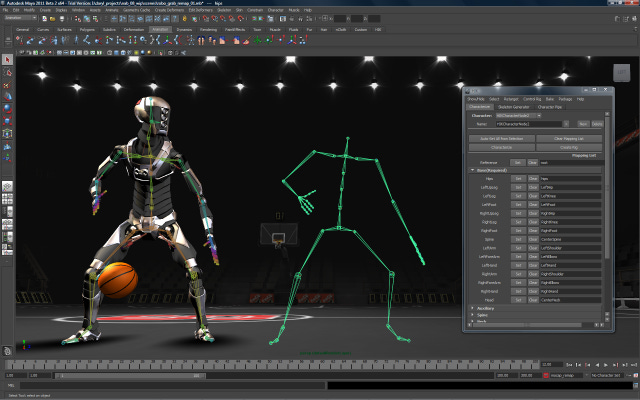
The problem was that I no longer had access to those resources.
But here's the thing that still gives me chills when I think about it: what I was trying to build in 2002 was genuinely impossible with the technology that existed at the time.
Real-time 3D in a browser? Didn't exist.
Integrated enterprise data systems? Not a chance.
Touch interfaces that could manipulate complex visualizations? Science fiction.
I was trying to build a real-time digital dashboard, but we didn't even have a name for that back then.
The audacity of it still amazes me.
Building the Impossible
I reached out to my network and found someone who had been working with Flash. Unfortunately, I forget his name now, terrible of me. However, he was able to take my vision and we created a working prototype that was data-driven to a certain extent.
It wasn't working exactly, but it looked like it was working.
And when you're doing a prototype, that's all it has to do: work well enough to communicate an idea.
I was exploring the idea of a touchscreen user experience, which was very new at the time. We had actually developed a similar system for General Motors with our team in the Toronto office. Bill Buxton, our chief scientist, has spent his entire career focusing on user interaction with computers and pioneered touch-screen editing in 3D.
Being able to touch graphics on the screen and manipulate them, although now seeming trite, was key for GM to transition from Art to Part in a few short years, rather than eight or nine.
I was trying to create a system that resembled art in the office. In its passive state, it was unobtrusive, just beautiful digital art on the wall.
However, when touched, it would come to life and animate into a series of different views, allowing you to isolate various aspects of the project, including viewing dailies if needed.
The Demo
I showed the prototype to Mike, and he went crazy.
He thought, "Oh my God, this is exactly what they need. I can't wait to introduce you."
So he introduced me, and after a couple of phone calls, I was on a plane to Washington, D.C.
I must tell you, I was awestruck to be there. I'd been in some prestigious conference rooms, Lucasfilm, WETA, Sony Imageworks, but walking into the headquarters of National Geographic was thrilling.
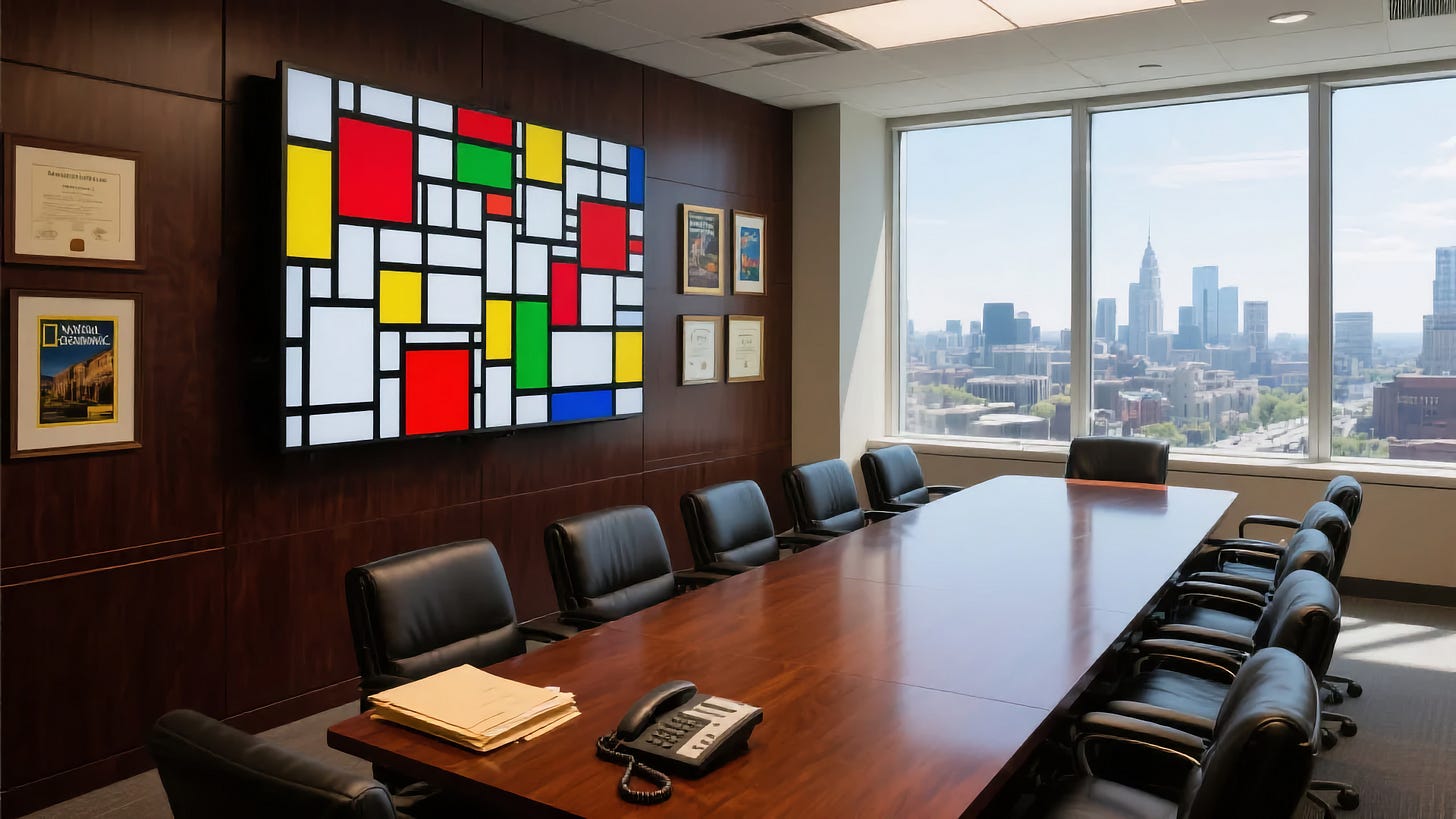
I remember preparing for that demo. Having a Flash demo inside a browser was in itself 100% unique. It was a core capability that would later come into play when we introduced introNetworks.
So I didn't use PowerPoint, I used the software we’d created. And if I remember correctly, I had designed several different visualizations in case someone wanted to dig even deeper into the causal chain.
When I showed them the interface, I could see I had their attention. These were people used to seeing amazing things, but I was showing them something completely outside their normal experience.
But then came the questions. And that's when the reality of 2002 began to close in around my beautiful vision.
They appreciated the vision. They could see how much time I'd put into executing a solution.
And they were genuinely bummed they couldn't use it.
The room got quiet for a moment. I could sense them wanting to say yes, but they knew they couldn't.
Come back in ten years
That's when they laughingly said, "Mark, come back in ten years."
I was disappointed. But I'd done a hundred visits like this with Wavefront, showing things that had never been done before. So I wasn't dissuaded.
But I didn't have a team, and I didn't really know how to solve the underlying problem of the systems not being integrated, not talking to each other.
I felt like, again, I was a bit ahead of the curve. There was a ton of infrastructure to consider, and while the prospective users agreed it would be great, it was a heavy lift.
You know what I should have said?
"Let's set a date. I'll see you then."
The Missing Piece
Walking out of that conference room, I realized something important.
It doesn't feel too early while you're doing it. You're deeply involved in trying to solve a problem you either directly experienced or indirectly understand through someone like Mike, who'd been working with these networks for twenty-plus years.
But here's where I failed: I never talked directly to the networks themselves.
If I had, I would have found out that yes, being able to see the entire production pipeline in a single glance would be nice, but impractical, because none of the enterprise-level systems were interoperable.
I would have either said, "Thanks for your time," or I would have thought about the problem from a completely different angle.
Yep, that's what hindsight does.
What It Would Look Like Today
Now? I'd have Claude analyze all the production variables and create predictive models. Starlink would handle the connectivity from anywhere on Earth. Notion or Airtable could serve as the dashboard backend. Zapier would connect all the different systems.
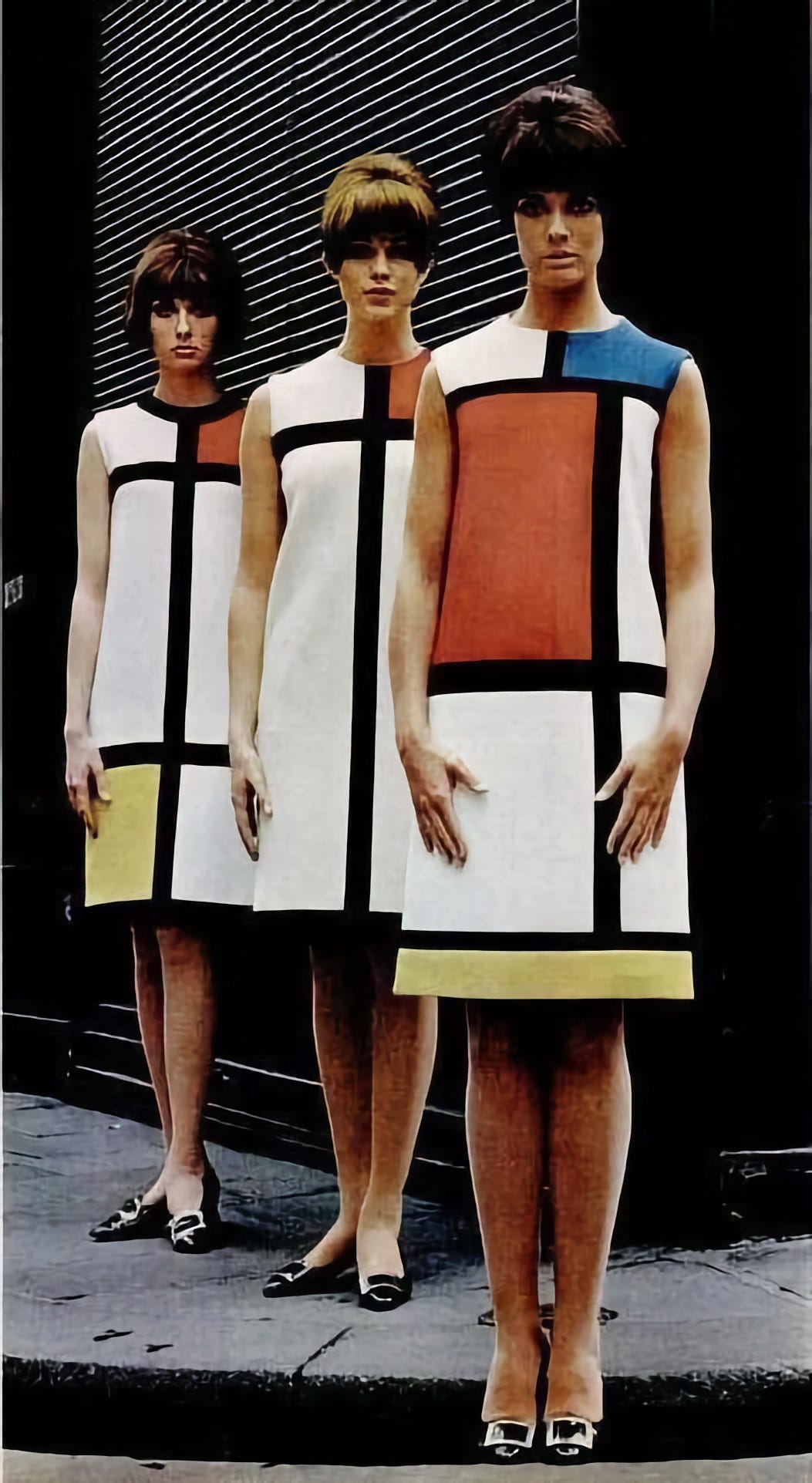
With ubiquitous satellite internet, you've eliminated the connection issue completely. It would be trivial to have a method for collecting the day's progress against criteria that had been set up well before anyone got on a plane.
Back to using the phone: there's no reason you couldn't actually speak your notes rather than filling out a form.
Or better yet, an AI assistant could call at an appointed hour and have a natural conversation with the production assistant, understanding context, asking follow-up questions, even detecting stress levels in their voice.
All of this happens in real time, so no matter what time the Head of Production checks in, from their own phone, they know exactly what's going on worldwide.
And because the AI agents talk to one another, they can easily tap into weather APIs, news feeds, even social media monitoring to see if political unrest is developing near a shoot location.
The shift from reactive "what went wrong yesterday" to predictive "what might go wrong tomorrow", that's the real revolution.
In 2002, I was trying to see everything that was happening. Today, we can see everything that's about to happen.
How I Think About Ideas Now
This experience changed how I approach innovation.
I ask a lot more questions now and have learned that understanding the problem extremely well is the first big step.
Then I use my own system, See What You Think, to accept that it's a problem I want to solve.
Then I Dive in and Discover, learning as much about the problem as I can. If ideas come up during that phase, I note them and keep track.
Then I Cluster the Chaos and categorize the discovery. What goes with what? How much do I know? What's left to know? And in an extremely exciting way, I can now do this with AI and save myself a lot of time. I've been doing it this way for the past two years.
Once that categorization is done, I Make a Map and move each action item to a timeline, with the end being what I call the event horizon, when do I need this to be done?
Then I move each item over until there's nothing left, and then I decide, again, that this is my problem to solve.
And I take the first step, which I lovingly call "One in a row."
Then we're off.
The Framework I Didn't Know I Had
You know, See What You Think wasn't called into being until the spring of 2018 when I was writing my TEDxFargo talk. But it was something I'd done intuitively since I was in my early thirties. I just had never codified it.
So MONDRIAN was me operating with what would later become the See What You Think framework, but I hadn't named or structured it yet.
I was seeing the problem, thinking about solutions, and acting on building a prototype, even when the infrastructure wasn't ready.
I don't know if we were on time or too early with our other ventures. It feels like each time we've made a breakthrough, it was the right time.
• Wavefront took advantage of the first truly 3D performance-driven workstations from Silicon Graphics when they were only a year or so old
• introNetworks took advantage of what would come to be called Web 2.0, and Macromedia dubbed us the first true Rich Internet Application
• And now, with Coastal Intelligence, every idea we come up with seems to be perfectly timed, because it genuinely feels like you can do ANYTHING now
You just have to dream it.
The Mirror
That idea didn't become a company. But it became a mirror.
It showed me how I think. What I chase. Where my brain goes when someone hands me a mess and asks for clarity.
And that's worth something too.
So here's my question for you:
What's something you built or dreamed up way too early? What idea did you have that made perfect sense to you but left everyone else saying, "come back in ten years"?
And more importantly: what would happen if you revisited it now?
Because the world has a funny way of catching up to the dreamers.
Sometimes it just takes a little longer than we expect.
What ideas are you sitting on that might be perfectly timed for today? I'd love to hear about them, hit reply and tell me your "too early" story.


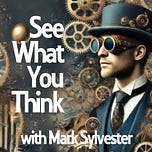







Share this post